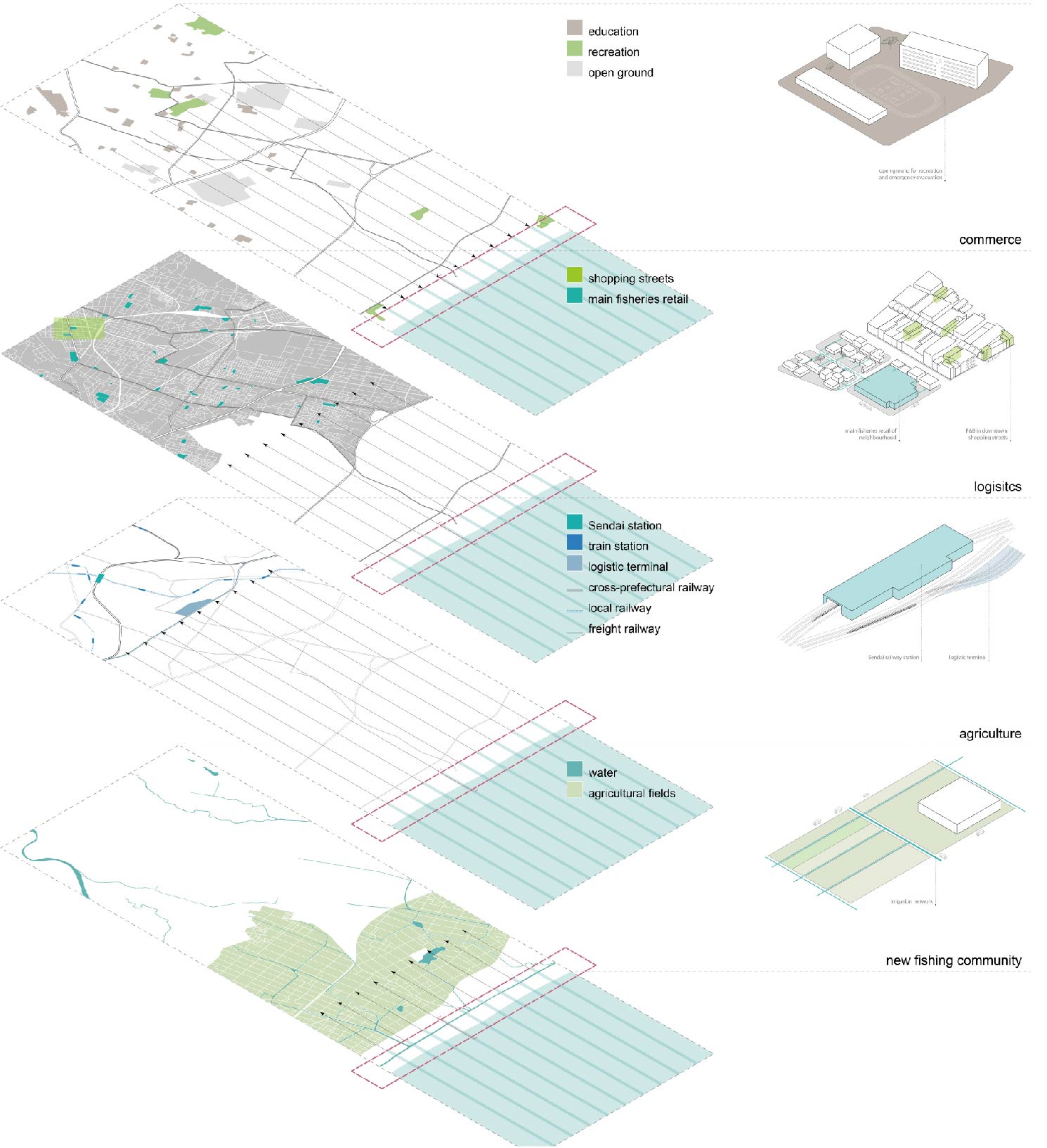



Fading Coastline: A Resilient Interface
香港 / hong kong
胡秀芝 / Sau-Chi Woo
論題主張一個能夠靈活應笞自然
定律的都市規劃和建築系統。以
日本仙台市為例.災后重建方案
主張不斷強化海堤和沿岸公路基
建•加強對海浪的防御。城市發
展被撤到内陸地區,令海岸地段
及漁農業一直被廢棄。此論題因
此構想出一個能適應自然變動的
漁業社區,並根據潮汐及水位暴
漲設計出可容納工業以至城市
活動的基礎設施。設施的建築
系統根據不同水位作出相應運
動變化帶動各樣空間形
成,讓各種活動依據自然界
主導的時令相應地進行。
The thesis argues for a resilient community planning and
building system that actively respond to rhythms of na-
ture. It also questions the conventional approach taken
by cities and buildings regarding natural violations, the
behavior of retreating and defending, an act of resistance.
The project attempts to extend retreated inland activities
towards the coast and the unknown realm of water. Cit-
ing Sendai City of Japan as a case of study, the region’ s
flat topography favors urban development but is also
ironically vulnerable to oceanic invasions. Lessons from
past earthquake and tsunami attacks taught the city to
unceasingly fortify seawalls and highway infrastructure,
barricading itself against future disasters. Development
is retreated to the inland, leaving the coastal area aban-
doned and decimating a large number of fishing in-
dustries. The project implemented here seeks to revive
coastal fishing communities that are resilient to natural
elements. A kinetic infrastructure is designed with the
capability to react with daily tidal changes and extreme
water level rises of Sendai Bay. It houses a variety of pro-
grams ranging from industrial needs to urban lifestyles,
which will also adapt themselves to the constantly chang-
ing spatial configuration of the infrastructure, triggered
by water motions according to a natural time-clock.
More Projects of this Session
展區其他作品